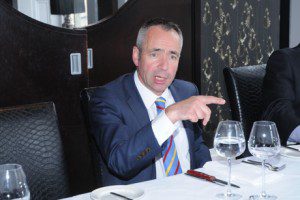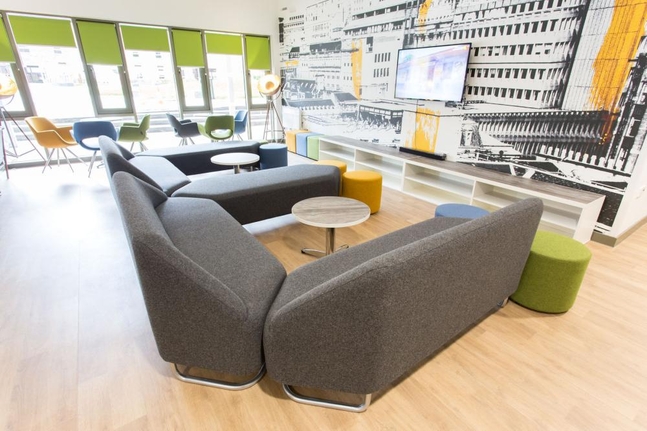
THE Scottish Government has announced that around £4 billion is to be invested over the next year in infrastructure, including £1 billion for road and rail infrastructure and £90 million for affordable housing.
The news was announced as part of the government’s 2016-17 Budget, described by Infrastructure Secretary Keith Brown as a plan “to improve infrastructure and increase house building”.
Mr Brown said, “We are committing to an increase of £90 million in affordable housing supply compared to 2015-16 – and a total investment of around £690 million in housing. This will support our overall commitment to delivering 50,000 new affordable homes by 2020-21.
“Transport infrastructure is also a critical part of this Budget. There will be over £1 billion invested in roads and transport projects, including the Aberdeen Western Peripheral Route and the electrification of the Glasgow-Edinburgh rail line.
“Alongside that of course is the completion of the new Forth Replacement Crossing.
“We have long placed considerable emphasis on public sector investment in infrastructure to stimulate economic recovery and that is what has driven much of the post-recession growth in Scotland.”
Trade body Homes for Scotland (HFS) welcomed the increase in affordable housing investment but said delivering the government’s ambitions was highly dependent on a strong private sector. Philip Hogg, outgoing chief executive of HFS, said, “Whilst providing more ‘affordable housing’ is a key element in tackling the country’s chronic undersupply of housing, this alone will not address Scotland’s housing crisis or meet the diverse needs and aspirations of all those living and working in Scotland.
“Scotland needs a balanced housing policy which places equal emphasis on having enough homes of all tenures, recognising the economic and social benefits that this would bring for communities throughout the country. We therefore hope that, like other administrations in the UK, the Scottish Government will allocate sufficient funding for the next phase of the hugely popular Help to Buy scheme and ensure it is as accessible to as many purchasers as possible in order to meet the demand that clearly exists.
“We also hope that the details of the budget will include assistance for SME home builders and action to facilitate the provision of infrastructure for housing.
“In respect of the announcement of a three per cent supplement on Land and Buildings Transaction Tax for additional residential properties such as buy to let properties and second homes over £40,000, we are wary of what impact this may have on the amount of rental stock available to tenants, particularly given the changes already proposed in the Private Tenancy Bill which iscurrently going through Parliament.”
Deputy First Minister John Swinney announced that Land and Buildings Transaction Tax (LBTT) would be maintained at current levels. However, a three per cent LBTT supplement on second homes over £40,000 was one of the more eye-catching prosposals.
Bell Ingram described the news as a “hidden potential time bomb” for the nation’s rural holiday home industry. Will Banham, an Associate at Bell Ingram’s Oban office, said, “The second homes sector is a crucial part of the property market across much of rural Scotland. In fact, it has been a significant factor in supporting property value and transaction levels through the downturn.
“Traditionally holiday homes in Scotland have been regarded as representing very good value for money when compared with other parts of the UK. However, at the moment the market is fairly static, so an increased tax burden on second home buyers will almost certainly force property values down and could have a chilling effect across the entire rural property market.
“Quite simply, a 3% rise in Land and Buildings Transaction Tax (LBTT) is bound to have a significant impact on the market in rural areas.
“With such a rise being introduced for second homes, inevitably there will now be a downward pressure on sale values to compensate for the change. In short, this could potentially become an additional barrier to buying and selling in what is already a static market.”
Ed Monaghan, chief executive of Mactaggart & Mickel Group, said the decision not to alter the rates of Land and Buildings Transaction Tax (LBTT) paid on top tier properties was “disappointing”. He added, “The introduction of the new tax system earlier this year, although favourable to first time buyers, has slowed the market for those looking to purchase properties in excess of £325,000.
“Housing has always been an important pillar to encourage positive economic growth and has in the past provided significant revenue. Time will tell if the Government’s £381m revenue budget for 2015/16 will be met.
“Although the introduction of new 3% levy on LBTT for second homes has been introduced to make opportunities for first-time buyers to enter the market as strong as possible the lack of initiatives like ‘Help to Buy’ are still being felt. It is once again disappointment that the Government have not matched the UK and Welsh Governments recent announcement on maintaining Help to Buy, and further reinforces the danger of creating a two speed housing market.
“The Scottish Government increased investment of £90m for affordable housing was welcomed. This will help to drive employment and growth in the construction industry and go part of the way of addressing the nation’s housing shortage.”











